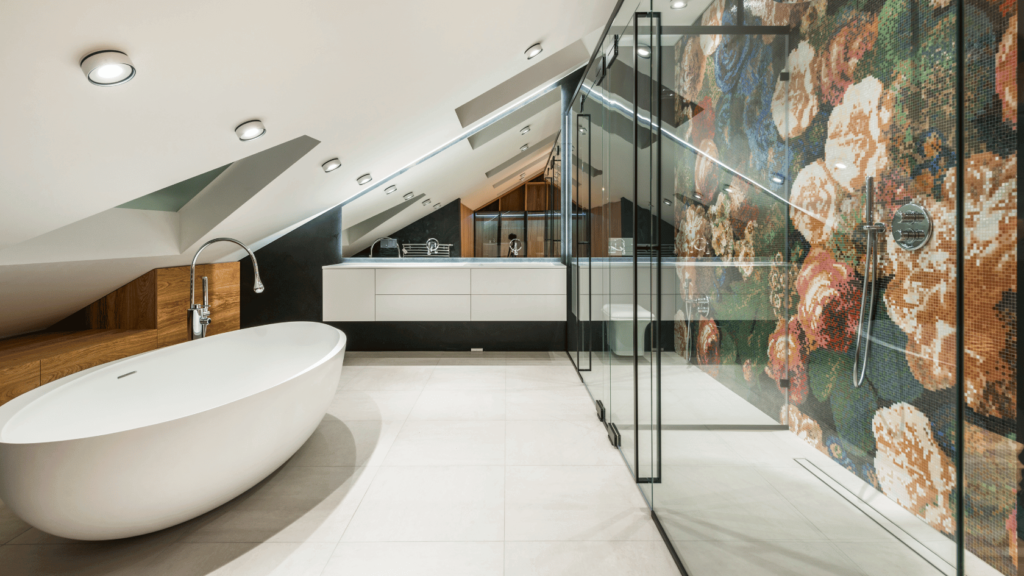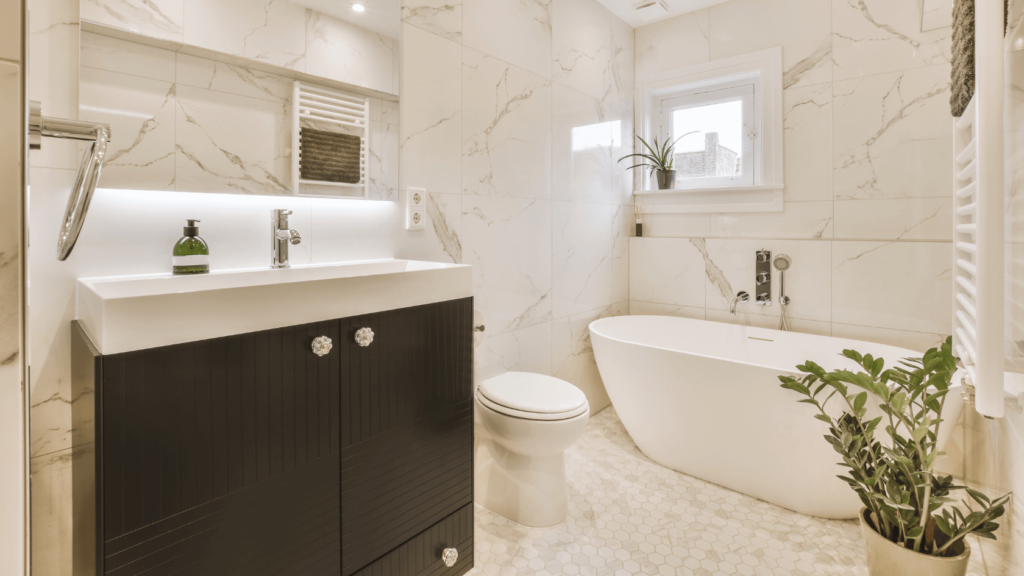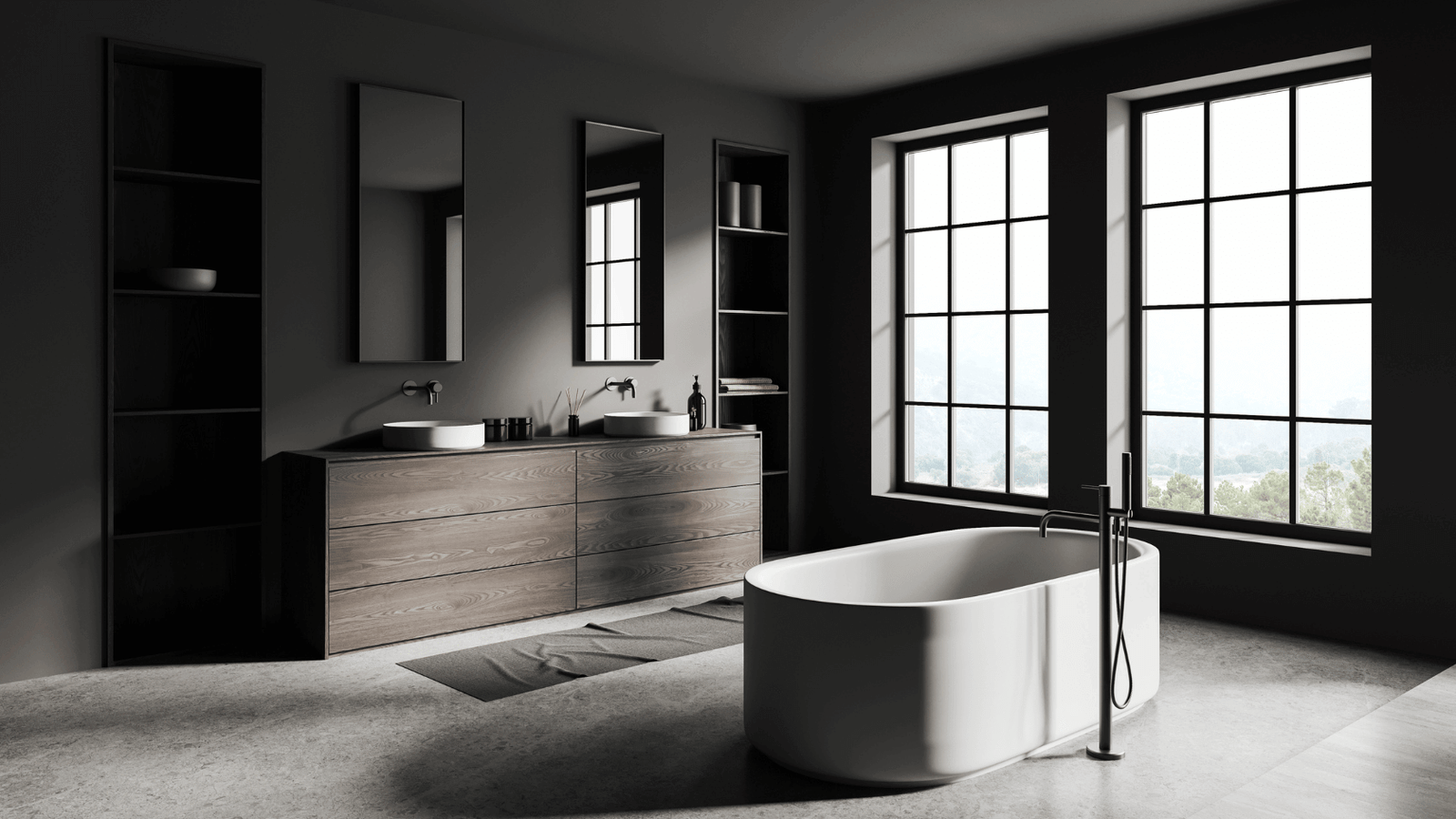Renovating your bathroom is a significant home improvement project that can enhance your daily comfort and increase your property’s value. However, understanding the costs involved is crucial to ensure you stay within your budget and achieve the bathroom of your dreams. This detailed guide will explore the average costs of bathroom renovations in Australia, the factors that influence these costs, and practical tips to help you manage your budget effectively.
1. Understanding the Average Costs of Bathroom Renovations
The cost of renovating a bathroom in Australia can vary widely based on several factors, including the size of the bathroom, the quality of materials used, and the complexity of the renovation. Here’s a detailed breakdown of the average costs:
a. Basic Renovation: $10,000 – $15,000
What’s Included:
- Painting Walls and Ceilings: Fresh paint can instantly brighten up your bathroom. Depending on the size, this typically costs between $1,000 and $2,000.
- Replacing Old Fixtures: Updating taps, showerheads, and other fixtures can cost around $500 to $1,500.
- Installing or Updating the Vanity: A new vanity or updating the existing one ranges from $500 to $2,000.
- Basic Tiling: Using ceramic tiles for floors and walls costs approximately $30 to $50 per square meter. For a standard 5 square meter bathroom, expect to spend $150 to $250 on tiling.
Best For: Homeowners on a tight budget or those looking for a simple refresh without major changes.
b. Mid-Range Renovation: $15,000 – $25,000
What’s Included:
- Upgrading Tiles: Higher-quality tiles like porcelain cost between $100 to $200 per square meter. For a 5-square-meter area, this would be $500 to $1,000.
- Improving Plumbing and Electrical Systems: Upgrading these systems ensures better functionality and safety, typically costing between $3,000 and $7,000.
- Installing Modern Fixtures: Features like rain showers and dual-flush toilets can cost between $1,000 and $3,000.
- Adding Storage Solutions: Built-in cabinets or shelves range from $500 to $2,000.
Best For: Homeowners seeking a balance between affordability and quality, wanting to make significant improvements without breaking the bank.
c. Luxury Renovation: $25,000 – $50,000+
What’s Included:
- Premium Materials: Using materials like marble or natural stone tiles can cost $200 to $500 per square meter. For a 5 square meter bathroom, this amounts to $1,000 to $2,500.
- Custom-Designed Vanities and Cabinets: These bespoke solutions can range from $2,000 to $10,000+.
- High-End Features: Freestanding bathtubs, heated floors, smart mirrors, and advanced lighting systems can add $5,000 to $15,000 or more.
- Advanced Ventilation Systems: Ensuring proper ventilation to prevent moisture buildup may cost between $1,000 and $3,000.
Best For: Homeowners looking to create a luxurious, spa-like retreat or aiming to significantly increase their property’s value.
2. Key Factors Influencing Bathroom Renovation Costs
Several elements can impact the overall cost of your bathroom renovation. Understanding these factors will help you make informed decisions and manage your budget effectively.
a. Size of the Bathroom
- Small Bathrooms (e.g., 2m x 2m): Generally cheaper to renovate due to lower material and labor requirements. Expect costs to be on the lower end of the renovation spectrum.
- Large Bathrooms (e.g., 4m x 3m): More expensive because they require more tiles, fixtures, and labor. Larger spaces may also need additional plumbing and electrical work, increasing costs.
Example Cost Calculation:
- Small Bathroom (4 sqm):
- Basic Renovation: $8,000 – $12,000
- Mid-Range Renovation: $12,000 – $20,000
- Large Bathroom (12 sqm):
- Basic Renovation: $24,000 – $36,000
- Mid-Range Renovation: $36,000 – $60,000
b. Quality of Materials
Tiles:
- Ceramic Tiles: $30 – $50 per square metre.
- Porcelain Tiles: $100 – $200 per square metre.
- Marble or Natural Stone Tiles: $200 – $500+ per square metre.
Fixtures:
- Basic Taps: $50 – $100 each.
- Designer Taps: $300 – $500+ each.
Vanities:
- Flat-Pack Vanities: Start at $500.
- Custom-Built Vanities: $2,000 – $5,000+.
Example Cost Calculation: For a mid-range bathroom with 10 sqm of tiling:
- Tiles: 10 sqm x $100 = $1,000
- Fixtures: 2 taps x $300 = $600
- Vanity: $2,500
- Total Material Cost: $4,100
c. Labor Costs
Labor typically accounts for 40% – 60% of the total renovation cost. Rates vary based on the tradesperson’s experience and location.
- Plumbers and Tilers: $50 – $100 per hour.
- Electricians: $60 – $120 per hour.
- General Contractors: May charge a percentage of the total project cost, often between 10% – 20%.
Example Cost Calculation: For a $20,000 renovation:
- Labor (50%): $10,000
d. Plumbing and Electrical Work
- Keeping the Existing Layout: Saves money by avoiding the need to move pipes or add new electrical outlets.
- Moving Pipes or Adding Outlets: Costs between $1,000 – $5,000+.
- Installing Underfloor Heating or Additional Lighting: Adds to the overall cost, typically between $2,000 – $6,000.
e. Custom Features
Unique designs and high-end features can significantly increase costs but also enhance the bathroom’s appeal and functionality.
- Frameless Shower Screens: $1,000 – $3,000.
- Special Tile Patterns: Custom tile designs can add 10% – 20% to tile costs.
- Smart Mirrors and Advanced Lighting: $500 – $2,000+.
3. Detailed Budgeting for Your Bathroom Renovation
Creating a comprehensive budget helps you keep track of expenses and avoid overspending. Here’s a step-by-step guide to budgeting your bathroom renovation:
a. Set a Total Budget
Determine the maximum amount you’re willing to spend. This will guide all your decisions throughout the renovation process.
Example:
- Total Budget: $20,000
b. Break Down the Costs
Allocate funds to different components of the renovation:
- Demolition: $1,000 – $2,500
- Includes removing old fixtures, tiles, and cabinetry.
- Tiling: $1,500 – $6,000
- Depends on the tile type and bathroom size.
- Fixtures and Fittings: $2,000 – $10,000
- Covers taps, showerheads, toilets, bathtubs, and vanities.
- Plumbing and Electrical: $3,000 – $7,000
- Upgrades and installations.
- Labor: $8,000 – $12,000
- Approximately 40% – 60% of the total budget.
- Lighting: $500 – $3,000
- Includes LED downlights, sconces, and task lighting.
- Painting: $500 – $2,000
- Fresh paint for walls and ceilings.
- Storage Solutions: $500 – $2,000
- Cabinets, shelves, and other storage units.
Total Allocated: $17,000 – $34,500
Note: Adjust the allocations based on your priorities and total budget.
c. Add a Contingency Fund
Set aside an extra 10% – 15% of your total budget for unexpected expenses.
Example:
- Total Budget: $20,000
- Contingency (10%): $2,000
- Adjusted Budget: $18,000 for planned expenses + $2,000 contingency
4. Practical Tips to Save Money on Your Bathroom Renovation
Renovating a bathroom doesn’t have to break the bank. Here are some strategies to help you save money without compromising on quality:
a. Keep the Existing Layout
Avoid moving plumbing and electrical points to reduce labor costs. Changing the layout requires extensive work, which can significantly increase expenses.
b. Shop Smart for Materials
- Look for Sales and Discounts: Many suppliers offer sales throughout the year. Keep an eye out for discounts on tiles, fixtures, and fittings.
- Buy in Bulk: Purchasing materials in bulk can often reduce the cost per unit.
- Consider Overstock or Clearance Items: These can offer high-quality materials at a fraction of the price.

c. DIY When Possible
Take on simple tasks like painting, installing mirrors, or assembling flat-pack furniture. This can save on labor costs and allow you to allocate more of your budget to essential elements.
d. Compare Quotes from Professionals
Get at least three quotes from licensed contractors to ensure you’re getting the best value for your money. Don’t just go for the cheapest option; consider the quality of work and reputation.
e. Choose Mid-Range Materials
Opt for materials that offer a good balance between quality and affordability. For example, choose porcelain tiles over marble to save money while still achieving a high-end look.
f. Reuse and Refurbish Existing Fixtures
If your existing fixtures are in good condition, consider refurbishing them instead of replacing them. A fresh coat of paint or new handles can give them a new look at a lower cost.
5. Why Invest in a Bathroom Renovation?
Renovating your bathroom is more than just a cosmetic upgrade; it’s a smart investment that offers numerous benefits:
a. Increase Home Value
A modern, well-designed bathroom can significantly boost your property’s resale value. Studies show that a renovated bathroom can increase home value by up to 70%.
b. Improve Functionality
Upgrading outdated layouts or adding storage solutions makes your bathroom more practical and easier to use. Features like walk-in showers, double vanities, and ample storage can enhance daily living.
c. Enhance Comfort and Enjoyment
Adding luxurious features such as heated floors, rain showers, or freestanding bathtubs can transform your bathroom into a relaxing retreat, improving your overall quality of life.
d. Boost Energy Efficiency
Installing water-saving fixtures and energy-efficient lighting can reduce your utility bills over time. Efficient toilets, showerheads, and LED lighting contribute to lower water and electricity usage.
e. Address Maintenance Issues
A renovation allows you to fix any existing problems such as leaks, mold, or outdated electrical systems, ensuring your bathroom is safe and functional.
6. Step-by-Step Guide to Starting Your Bathroom Renovation
Embarking on a bathroom renovation can be overwhelming. Here’s a step-by-step guide to help you navigate the process smoothly:
a. Plan and Design
- Assess Your Needs: Determine what you want to achieve with the renovation. Do you need more storage, a better layout, or upgraded fixtures?
- Create a Design: Sketch out your ideas or use online design tools to visualize the new bathroom.
- Choose a Style: Decide on a design style that complements the rest of your home, whether it’s modern, traditional, or minimalist.
b. Set a Budget
Based on the average costs and your specific needs, establish a realistic budget. Allocate funds to each component and include a contingency fund for unexpected expenses.
c. Hire Professionals
- Research Contractors: Look for licensed and insured contractors with good reviews and a solid reputation.
- Get Quotes: Obtain multiple quotes and compare them based on price, services offered, and timelines.
- Check References: Speak to past clients to ensure the contractor delivers quality work on time.
d. Choose Materials and Fixtures
Select the tiles, fixtures, vanities, lighting, and other materials you want to use. Consider durability, maintenance, and aesthetics when making your choices.
e. Obtain Permits
Some renovations may require permits, especially if you’re changing the plumbing or electrical systems. Check with your local council to ensure compliance with regulations.
f. Schedule the Renovation
Plan the renovation timeline to minimize disruption to your daily life. Coordinate with contractors to ensure the project stays on track.
g. Start the Renovation
- Demolition: Remove old fixtures, tiles, and cabinetry.
- Structural Changes: Make any necessary changes to plumbing, electrical, or the layout.
- Installation: Install new tiles, fixtures, vanities, and other components.
- Finishing Touches: Paint walls, install lighting, and add accessories.

h. Final Inspection
Once the renovation is complete, inspect the work to ensure everything is done to your satisfaction. Address any issues with the contractor before making the final payment.
7. Common Mistakes to Avoid During Bathroom Renovations
Avoiding common pitfalls can save you time, money, and frustration:
a. Underestimating the Budget
Many renovations exceed their initial budget due to unforeseen issues. Always include a contingency fund to cover unexpected expenses.
b. Skimping on Quality
Choosing the cheapest materials and labor can lead to problems down the line. Invest in quality products and skilled professionals to ensure a lasting renovation.
c. Ignoring Functionality
Aesthetic appeal is important, but so is functionality. Ensure your bathroom layout meets your practical needs, such as sufficient storage and easy access to fixtures.
d. Poor Planning and Design
Without a clear plan, the renovation can become disorganized and costly. Take the time to plan each step and consider how all elements will work together.
e. Overlooking Ventilation
Proper ventilation is crucial to prevent mold and mildew. Ensure your bathroom has adequate ventilation, either through windows or exhaust fans.
8. Frequently Asked Questions (FAQs)
Q1: How long does a bathroom renovation take in Australia?
- A: On average, a bathroom renovation can take anywhere from 2 to 6 weeks, depending on the scope of the project and any unforeseen issues that arise.
Q2: Do I need a permit for a bathroom renovation?
- A: It depends on the extent of the renovation. Minor updates like painting may not require a permit, but significant changes to plumbing or electrical systems typically do. Always check with your local council.
Q3: Can I live in my house during the bathroom renovation?
- A: Yes, but it can be inconvenient, especially if the bathroom is your primary facility. Consider setting up temporary arrangements if possible.
Q4: How can I increase the value of my bathroom renovation?
- A: Focus on modern, timeless designs and high-quality materials. Features like double vanities, walk-in showers, and energy-efficient fixtures are highly desirable.
Q5: Is it better to hire a contractor or manage the renovation myself?
- A: Hiring a contractor can ensure the job is done professionally and efficiently. However, if you have the skills and time, managing the renovation yourself can save money. Weigh the pros and cons based on your situation.
9. Final Thoughts
Renovating your bathroom is a substantial investment that can greatly enhance your home’s comfort and value. By understanding the costs involved and carefully planning each step, you can achieve a beautiful and functional bathroom within your budget. Remember to prioritize quality, functionality, and aesthetics to create a space that meets your needs and stands the test of time.
Ready to start your bathroom renovation? Reach out to trusted professionals in your area for quotes and expert advice. With the right team and a clear plan, you’ll be well on your way to enjoying your dream bathroom!
10. Additional Resources
- Australian Housing and Urban Research Institute (AHURI): www.ahuri.edu.au
- Master Builders Association: www.masterbuilders.com.au
- Housing Industry Association (HIA): www.hia.com.au
These organizations offer valuable information and can connect you with qualified professionals to help with your bathroom renovation.

